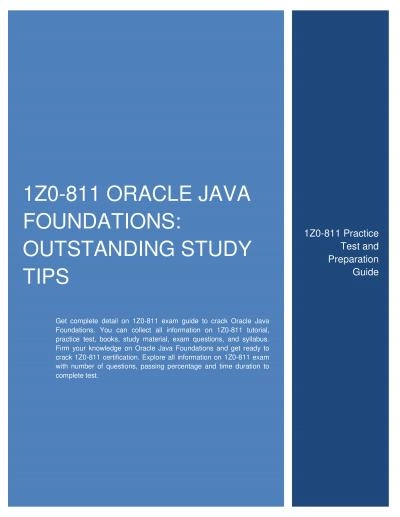PPT-1.5 Input and Output Introduction to Programming in Java: An
Author : mjnt | Published Date : 2020-06-22
Interdisciplinary Approach Robert Sedgewick and Kevin Wayne Copyright 20022010 21411 749 AM Input and Output Input devices Output devices
Presentation Embed Code
Download Presentation
Download Presentation The PPT/PDF document "1.5 Input and Output Introduction to P..." is the property of its rightful owner. Permission is granted to download and print the materials on this website for personal, non-commercial use only, and to display it on your personal computer provided you do not modify the materials and that you retain all copyright notices contained in the materials. By downloading content from our website, you accept the terms of this agreement.
1.5 Input and Output Introduction to Programming in Java: An: Transcript
Interdisciplinary Approach Robert Sedgewick and Kevin Wayne Copyright 20022010 21411 749 AM Input and Output Input devices Output devices. Input 1 Desired Output Invert System Model Prior Knowledge brPage 5br The InversionProblem Input Desired Output Invert the known system model 0 to find input Input 1 Desired Output Invert System Model Prior Knowledge His Mom knows how she ha Java is a programming language. We write computer programs in some language. Languages include C++, C#, Visual Basic, Ruby and Python. We choose Java because. it is freely available. it is expressive. Overview of I/O Streams . To bring in information, a program opens a . stream. on an information source (a file, memory, a socket) and reads the information sequentially, as shown in the following figure. . Computer Literacy BASICS: A Comprehensive Guide to IC. 3. , 3. rd. Edition. Morrison / Wells. 2. 2. 2. Objectives. Identify and describe standard and specialized input devices.. Identify and describe standard and specialized output devices.. streams. A simple input stream accepts typed data from a keyboard. A simple output stream writes data to the terminal. Standard Input/Output Streams. A . stream. is a sequence of characters. Streams . EduBull provides online java course, learn online java, javascript along with online java video tutorial and online java learning app. This is the best way to learn java. Boost up your career in Java course with us Programming Contest problems Dr. Jeyakesavan Veerasamy CS faculty, The University of Texas at Dallas Email: jeyv@utdallas.edu Website: www.utdallas.edu/~jeyv Welcome to CodeWarmers! Jey Veerasamy & John Cole University of Florida Department of CISE Spring 2013. Lecture 02 – . Computer Programming Languages. Webpage. :. . www.cise.ufl.edu/~mssz/JavaNM/Top-Level.html. COP2800 – Programming in JAVA. Java is a programming language. We write computer programs in some language. Languages include C++, C#, Visual Basic, Ruby and Python. We choose Java because. it is freely available. it is expressive. PUME DATA SHEET EDS11-167aApr. 1, 2011 SYSTEM SPECIFICATION1. Product type: Multi-loop module type temperature 2. Module type1) Analog module: Total maximum 16 unitsa) Control module (4 loop/unit)b) E The Desired Brand Effect Stand Out in a Saturated Market with a Timeless Brand The Desired Brand Effect Stand Out in a Saturated Market with a Timeless Brand Get complete detail on 1Z0-811 exam guide to crack Oracle Java Foundations. You can collect all information on 1Z0-811 tutorial, practice test, books, study material, exam questions, and syllabus. Firm your knowledge on Oracle Java Foundations and get ready to crack 1Z0-811 certification. Explore all information on 1Z0-811 exam with number of questions, passing percentage and time duration to complete test.
Download Document
Here is the link to download the presentation.
"1.5 Input and Output Introduction to Programming in Java: An"The content belongs to its owner. You may download and print it for personal use, without modification, and keep all copyright notices. By downloading, you agree to these terms.
Related Documents

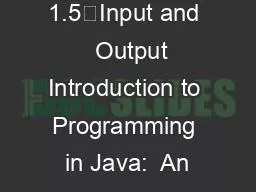
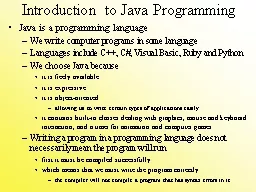
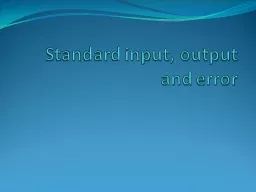
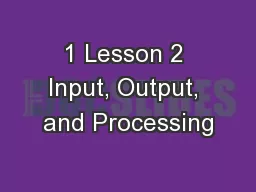
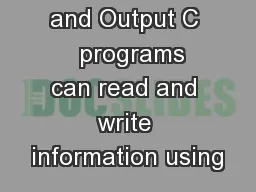

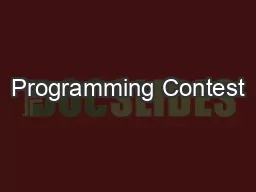

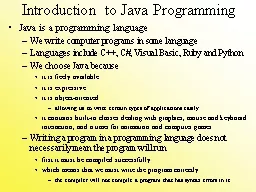

![[FREE]-Java Java For Beginners Guide To Learn Java And Java Programming (Java Programming](https://thumbs.docslides.com/970816/free-java-java-for-beginners-guide-to-learn-java-and-java-programming-java-programming-books.jpg)
![[eBOOK]-java programming book.effective java coding problems for beginners and dummies](https://thumbs.docslides.com/973026/ebook-java-programming-book-effective-java-coding-problems-for-beginners-and-dummies-8th-edition-2021-2022-java-book-programming-java-for-beginners-java-a-beginner-s-guide.jpg)
